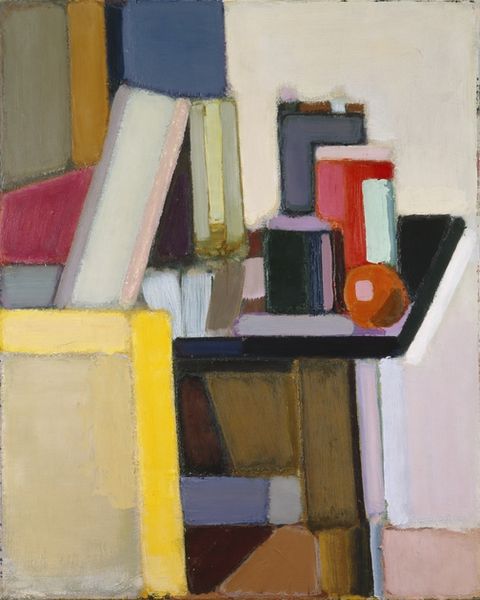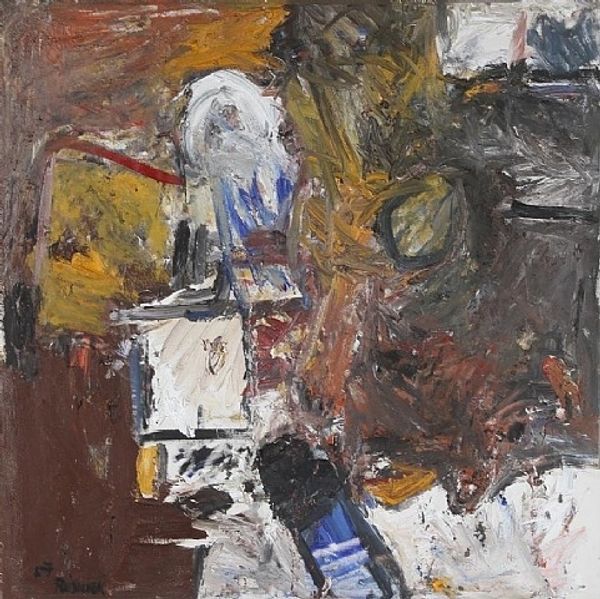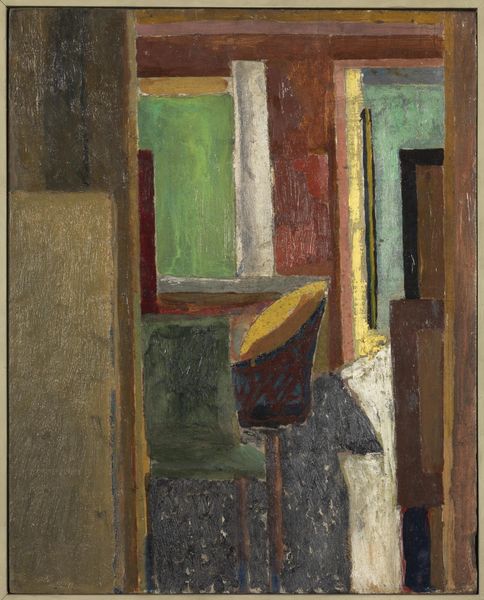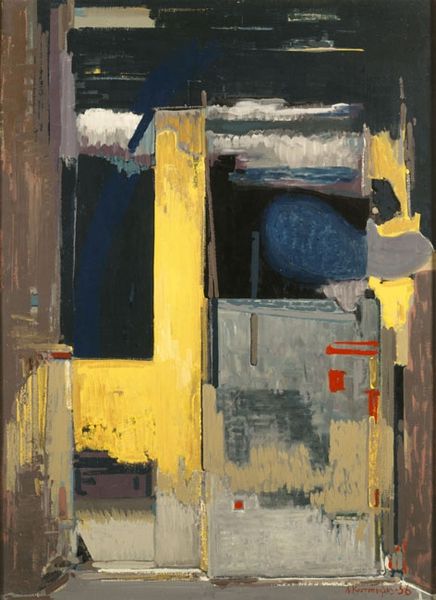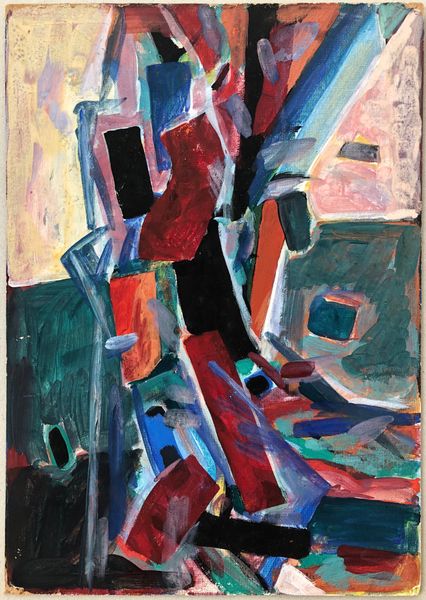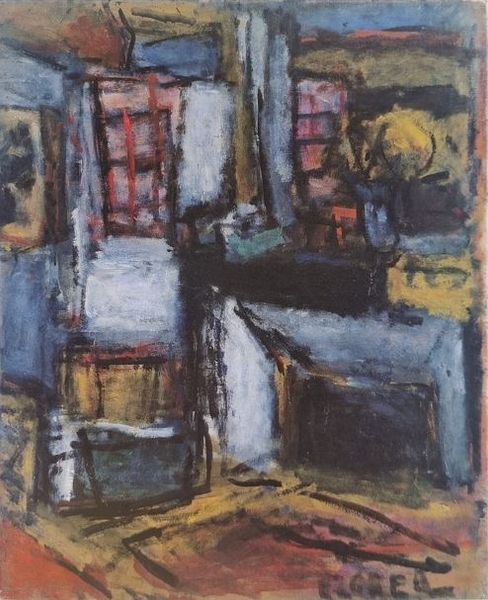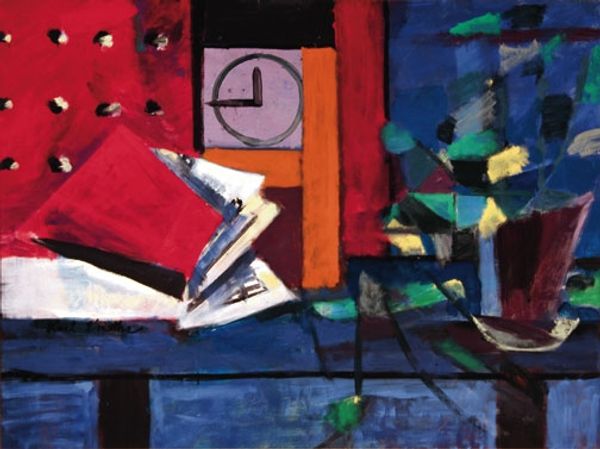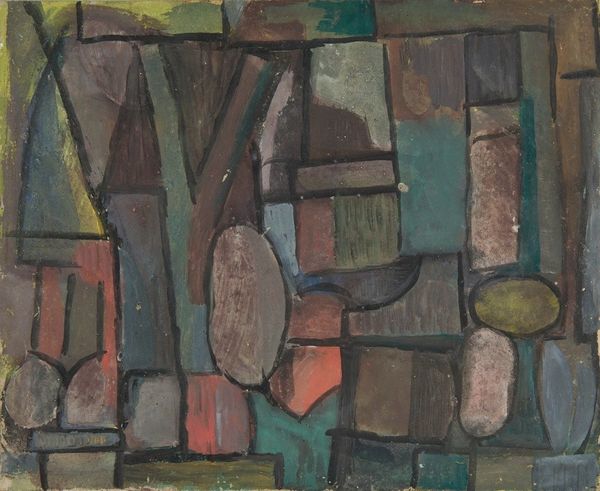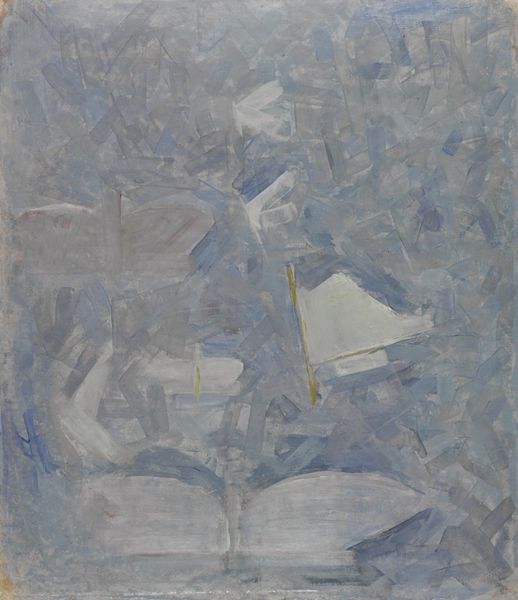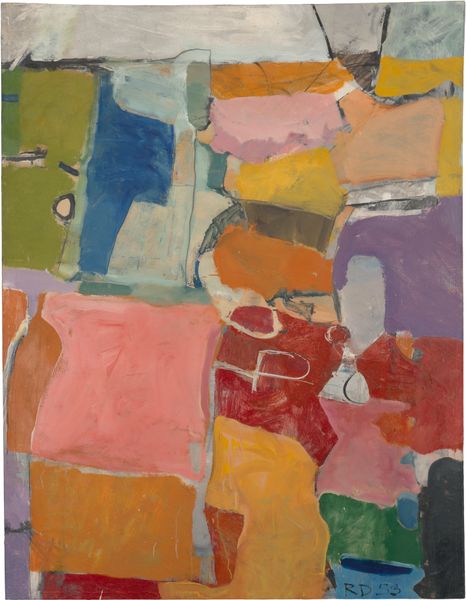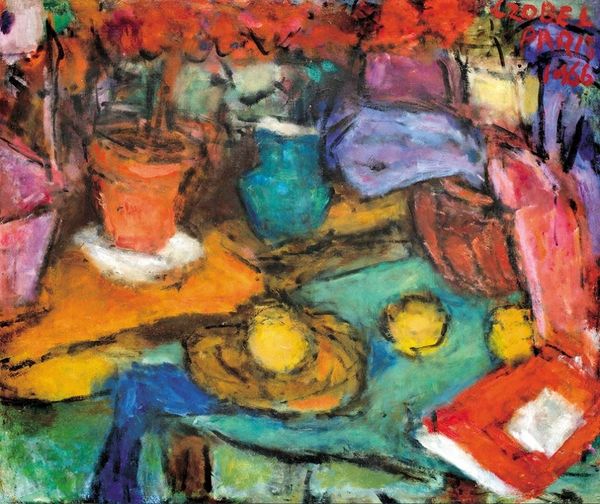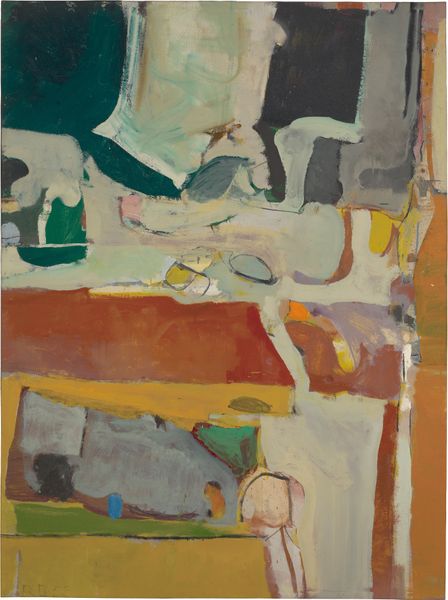
Copyright: William H. Johnson,Fair Use
Editor: Here we have William H. Johnson's "Still Life" from 1938, crafted with mixed media. The strong black outlines and fractured planes of color give it such a striking, almost puzzle-like feel. What do you see when you look at this piece? Curator: Immediately, the emphasis on formal relationships strikes me. Consider the interplay between the predominantly rectangular forms and the contrasting curves – the circular or oval shapes nestled amidst the sharp angles. This tension contributes to the dynamism of the composition. Editor: It's interesting you point that out. The cracks also feel so pronounced—do you think they are intentional? Curator: That's a valid question. The cracking in the paint could be read as an element integrated into the artwork’s aesthetic texture, serving as a kind of surface disruption that enhances its materiality. Editor: So, you're suggesting that the cracks might almost function as a design element, rather than a flaw? Curator: Precisely. Furthermore, notice how Johnson uses colour, creating visual rhymes. The yellow at the forefront echoes at the top, drawing the eye upward. What impact do you think this particular color choice has? Editor: I guess that grounds the work, giving the eye something to latch onto. Seeing the intentional use of lines and the mirroring of colours really sheds new light on what might seem like just an old painting. Curator: Indeed. Appreciating its formal structure helps reveal Johnson's particular artistic intent.
Comments
No comments
Be the first to comment and join the conversation on the ultimate creative platform.
